 Liam Young (from left to right), “In the Robot Skies”, 2017, Projection; “Planet City”, 2021, VR; “Seoul City Machine”, 2019, Projection.
Liam Young (from left to right), “In the Robot Skies”, 2017, Projection; “Planet City”, 2021, VR; “Seoul City Machine”, 2019, Projection.
On July 23, 2021 Asia Digital Art Exhibition officially opened at Beijing Times Art Museum. This exhibition brings together a total of 55 digital art works by over 60 artists (groups) and art teams from 7 countries including China, the United States, Germany and so on. It centers around information technologies, AI(Artificial Intelligence), NFT and other cutting-edge topics, using popular media such as videos, games, VR (virtual reality), AR (augmented reality), interactive installations, etc., providing Beijing spectators with the latest vision of the current digital art. At the opening ceremony that was held that morning, an award ceremony was also held for the exhibited works, including a science and technology award, four art awards, an U19 (under 19) award specially set up for young creators, and the superior award of “Asia Digital Art Award.”
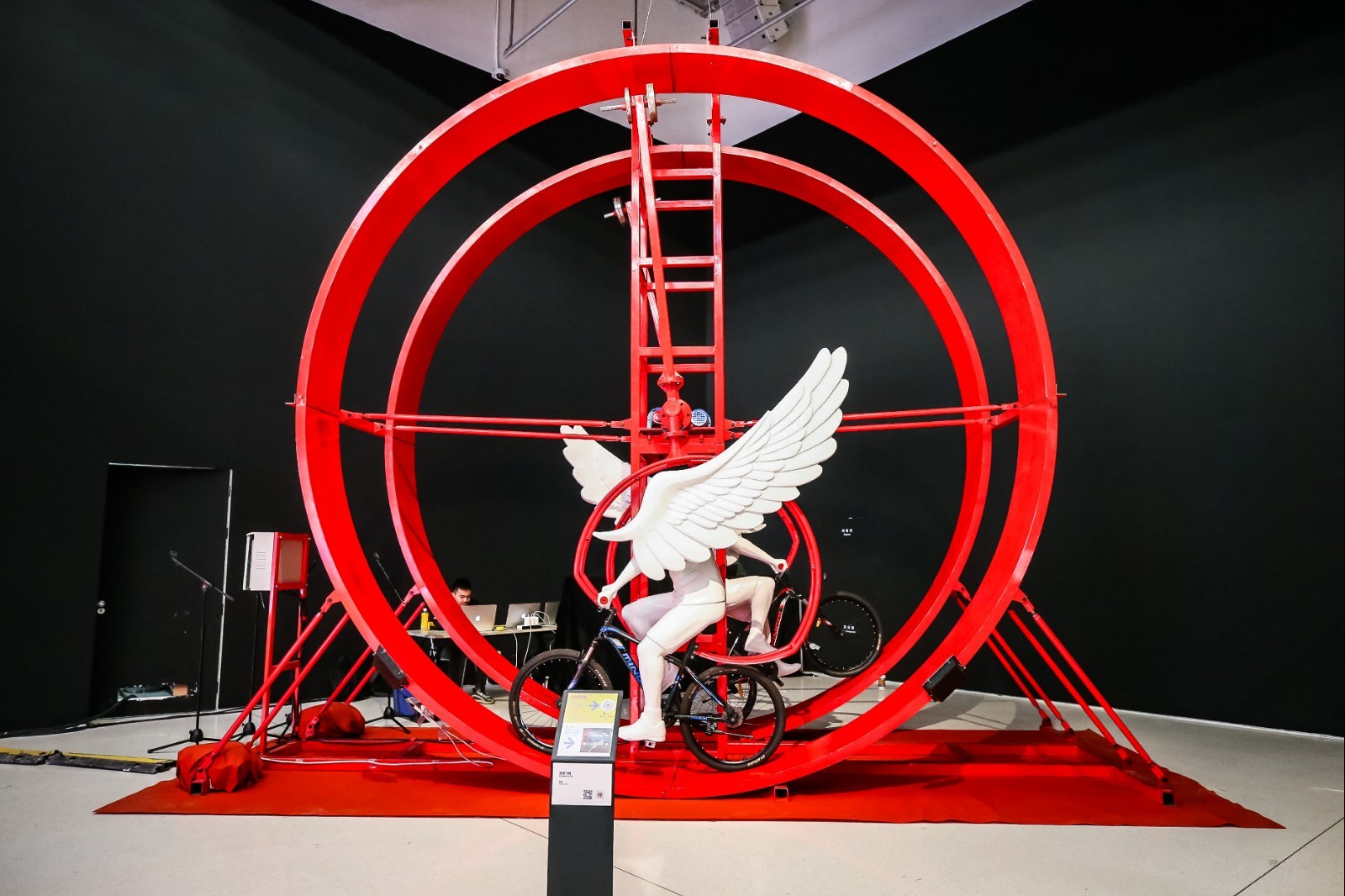 Zhang Jun, “Dream to Fly”, 2020, Iron-Fiber Reinforced Plastics, 5.5×5.5×2.5m
Zhang Jun, “Dream to Fly”, 2020, Iron-Fiber Reinforced Plastics, 5.5×5.5×2.5m
In the Preface to the exhibition, Qiu Zhijie, curator of the exhibition and Dean of the Experimental Art School of Central Academy of Fine Arts, regarded the exhibition as an echo of “The Midlife Crisis of the Digital Revolution” which was the theme of the 2019 Linz Electronic Arts Festival in Austria. It means that this new generation of technological revolution failed to truly achieve the goal of a new utopia as proposed at the end of the last century, the “digital revolutionary utopia” that people once expected to construct with digital technology on the basis of the exchange of information, unobstructed dialogue and the reorganization of the community did not arrive: the current internet has also failed to get rid of the tearing and violence of discourse, nor has it truly shaken the monopoly and exploration in capital production; the globalization which is accompanied by the rapid development of the digital revolution, has also encountered more profound conflict today. However, digital technology in today’s Asia, especially in China, has begun to play a non-negligible role. The digital economy has shown strong vitality in the development of the country; from cities to villages, from children to senior citizens, networks, platforms, and algorithms have become a part of each individual’s realistic life.
 Creativity Entertainment Lab (CEL) and Multi-disciplinary Artificial Reality Studio (MARS), School of Creativity and Art(SCA), Shanghai Tech University(China), “Virtuality Real”, 2021, video, 3mobile devices of real-time non-standard fixed-point motion capture, variable size
Creativity Entertainment Lab (CEL) and Multi-disciplinary Artificial Reality Studio (MARS), School of Creativity and Art(SCA), Shanghai Tech University(China), “Virtuality Real”, 2021, video, 3mobile devices of real-time non-standard fixed-point motion capture, variable size
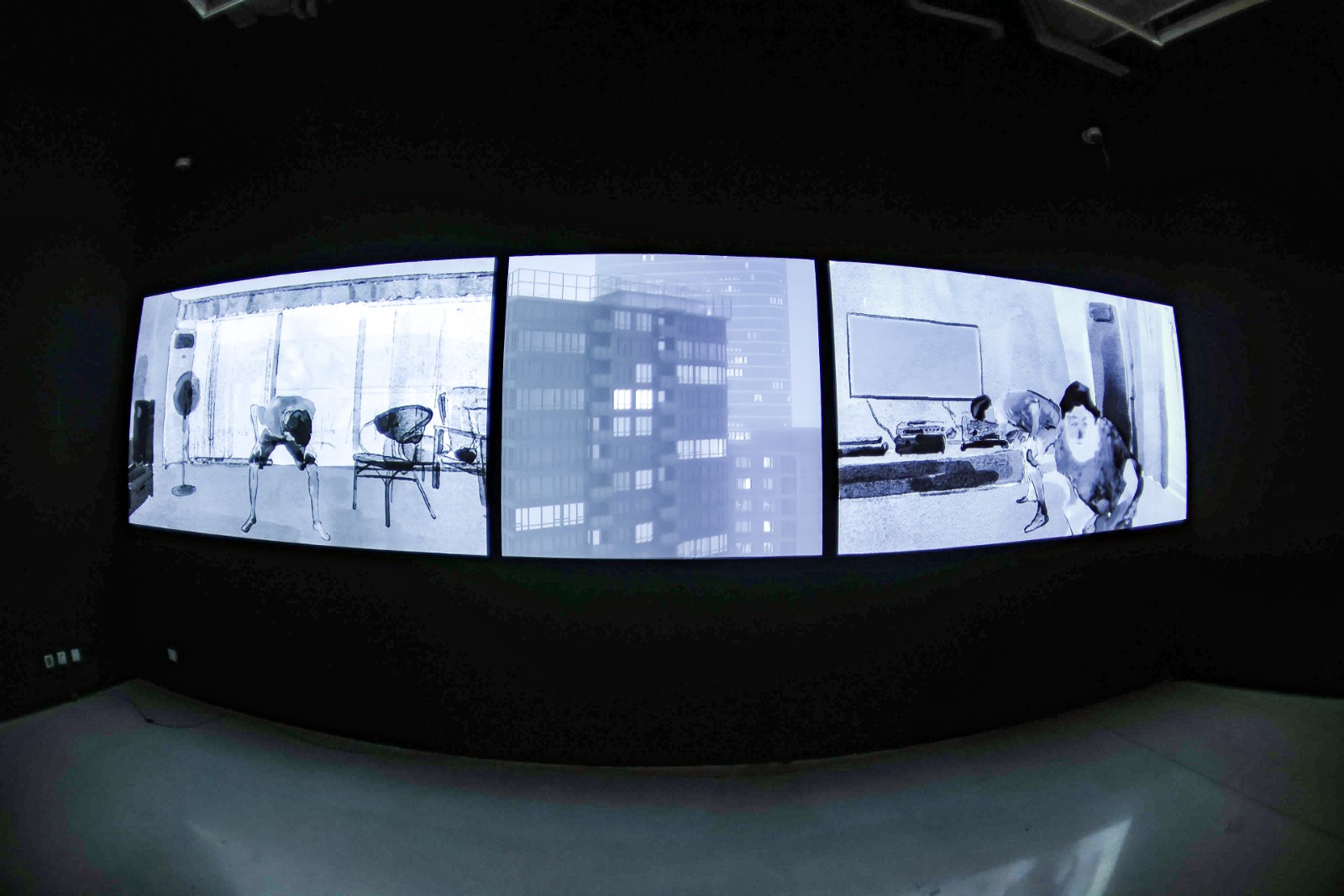
Huang Yue & Luo Yuchao, Haomin Peng, “Return to the Peach Blossom Wonderland”, 2020, video
Another context of this exhibition is the COVID-19 pandemic lasts over a year. The dilemma of the pandemic has widened the distance and estrangement between people from the dual aspects of medical practice and political practice. It is in such an environment that digital technology has played an important role in rebuilding the connection between people. In addition to the specially invited works, this exhibition also has a global solicitation of contributions. In these works from all over the world, a large number of authors from different professional backgrounds share a common experience in global travel and life. Qiu Zhijie pointed out that in the human struggle against the pandemic of COVID-19 over the past two years, a political farce surrounding the pandemic has been constantly staged, and the whole world seems to be irretrievably falling into tribalism. It is exactly at this moment that it is of great significance to reexamine the lofty ideals of the digital revolution. When the pandemic separates people, it is digital technology that allows us to maintain efficient communication and negotiation, while digital art provides a safe house for the coexistence of hearts, so the “Safe House” becomes the theme of the exhibition.
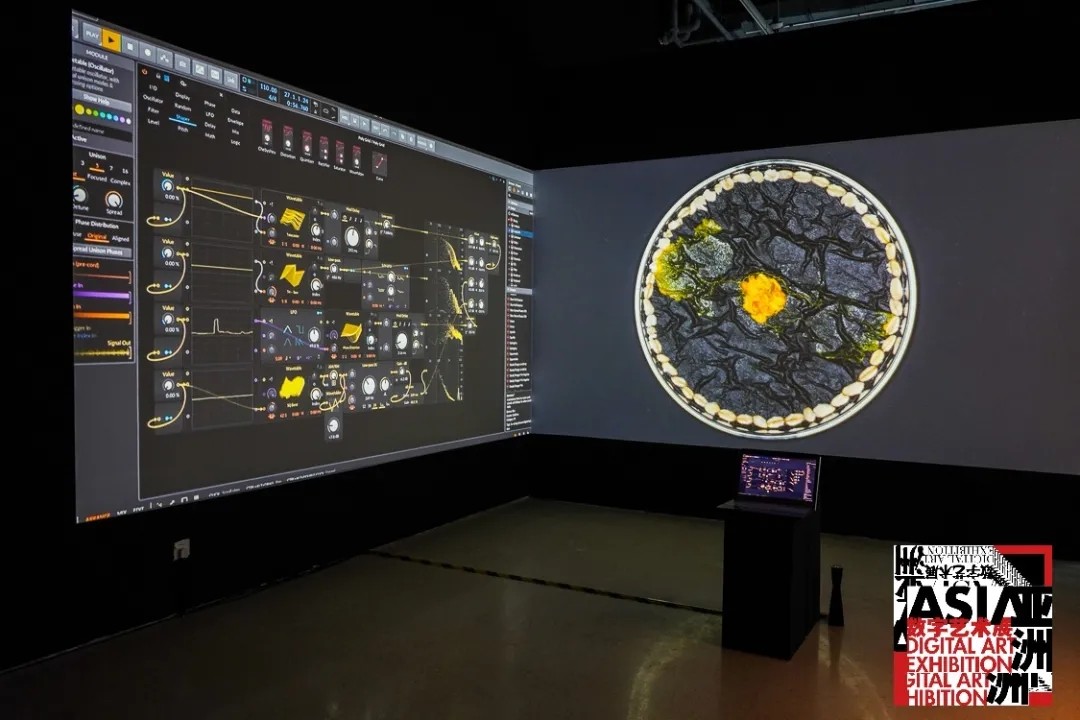 Sun Fangzheng, “Whispers of Hughes Mordecai”, 2021, Double screen image, video, sound, glass petri dish, sticky fungus, 6000×3000mm
Sun Fangzheng, “Whispers of Hughes Mordecai”, 2021, Double screen image, video, sound, glass petri dish, sticky fungus, 6000×3000mm
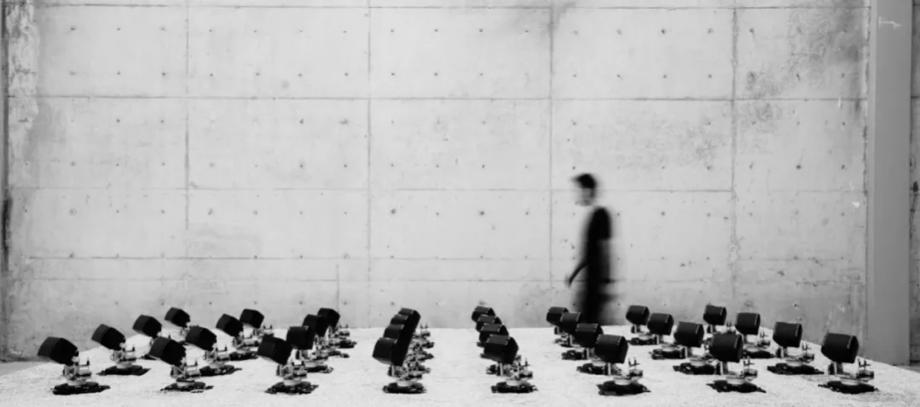
Bai Xiaomo, “Evolution”, 2016-2018, Motor, speaker, wheat Shen Jingjing, “Singularity”, 2020, VR Reality
Shen Jingjing, “Singularity”, 2020, VR Reality
“Singularity” is an immersive virtual reality (VR) created by Shen Jingjing, a young artist currently lives in the UK and it won the superior award of “Asia Digital Art Award.” Unlike common VR images and games that provide realistic reproduction of reality, “Singularity” shows a dark abstract space, in which countless points of light converge to form a forest. When the audience walks in the woods, they will encounter a series of images that are also composed of light spots, from animals and chessboards to computers and robots. These images imply a route of technological progress. “Singularity” is used here as a vocabulary for the history of science and technology, which shows a critical point of technological development. When technological progress reaches this point, our existing knowledge framework will not be able to provide any effective technological prediction after this point.
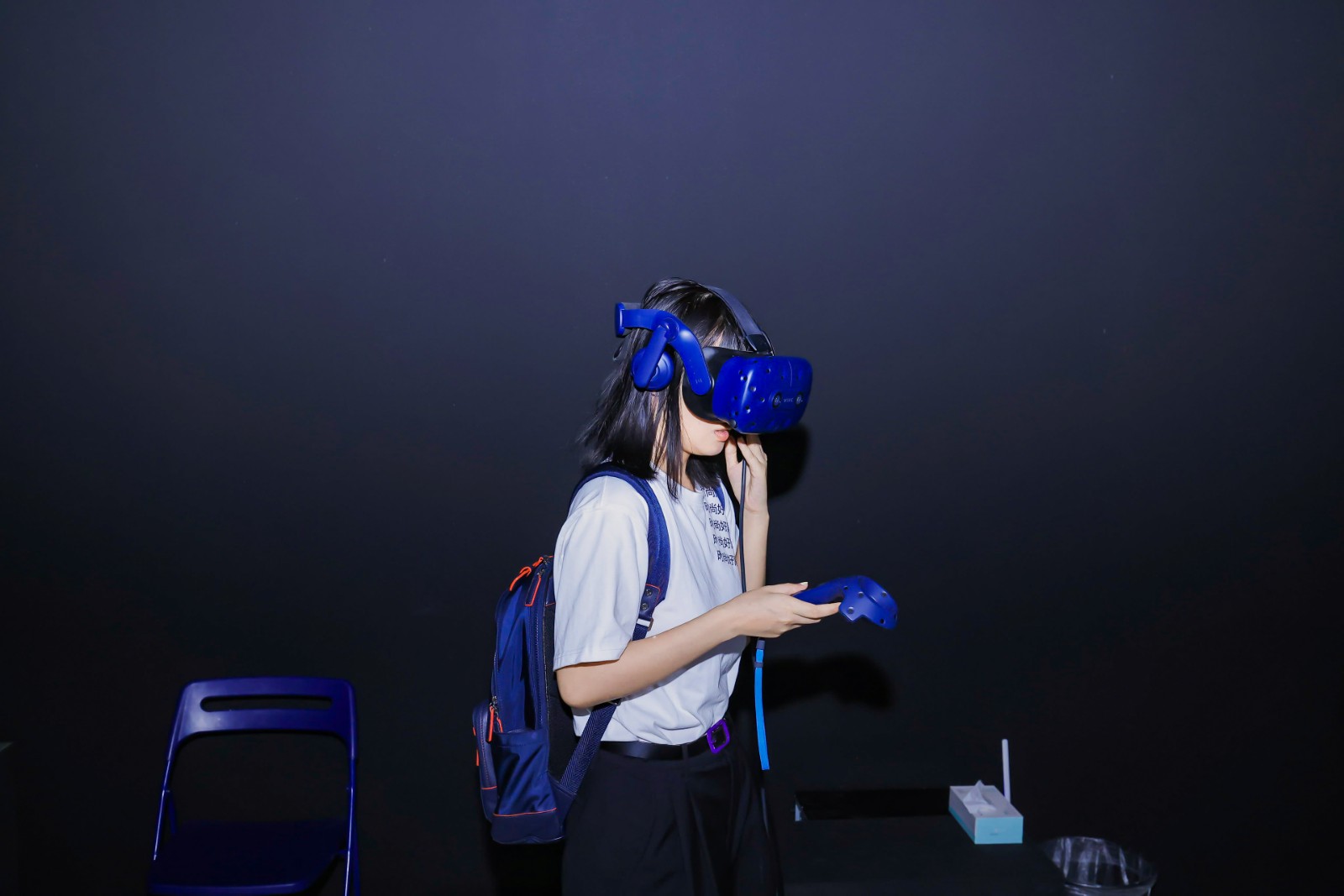 Exhibition View
Exhibition View
Therefore, the singularity itself means the blurring boundary between reality and the virtual. At the moment of the singularity, rigorous scientific predictions and sci-fi fantasy are no longer different from each other, and the scene displayed by the VR helmet to the audience has become a hyperreality different from Baudrillard’s context. Shen Jingjing combines popular interest and accelerationist philosophical thinking in “Singularity.” She uses VR, a new technology favored by popular culture, to show accelerationism, a theoretical model that is too complicated and radical for the public. In this accelerationist spatial model, the path of technology is like Heidegger’s “Holzwege”, which is not only related to the external form of the world, but it is also connected to the philosophical human cognition, when the audience look up, countless spots of light seem to converge into an endless starry sky, drawing our eyes and thoughts into the distance.
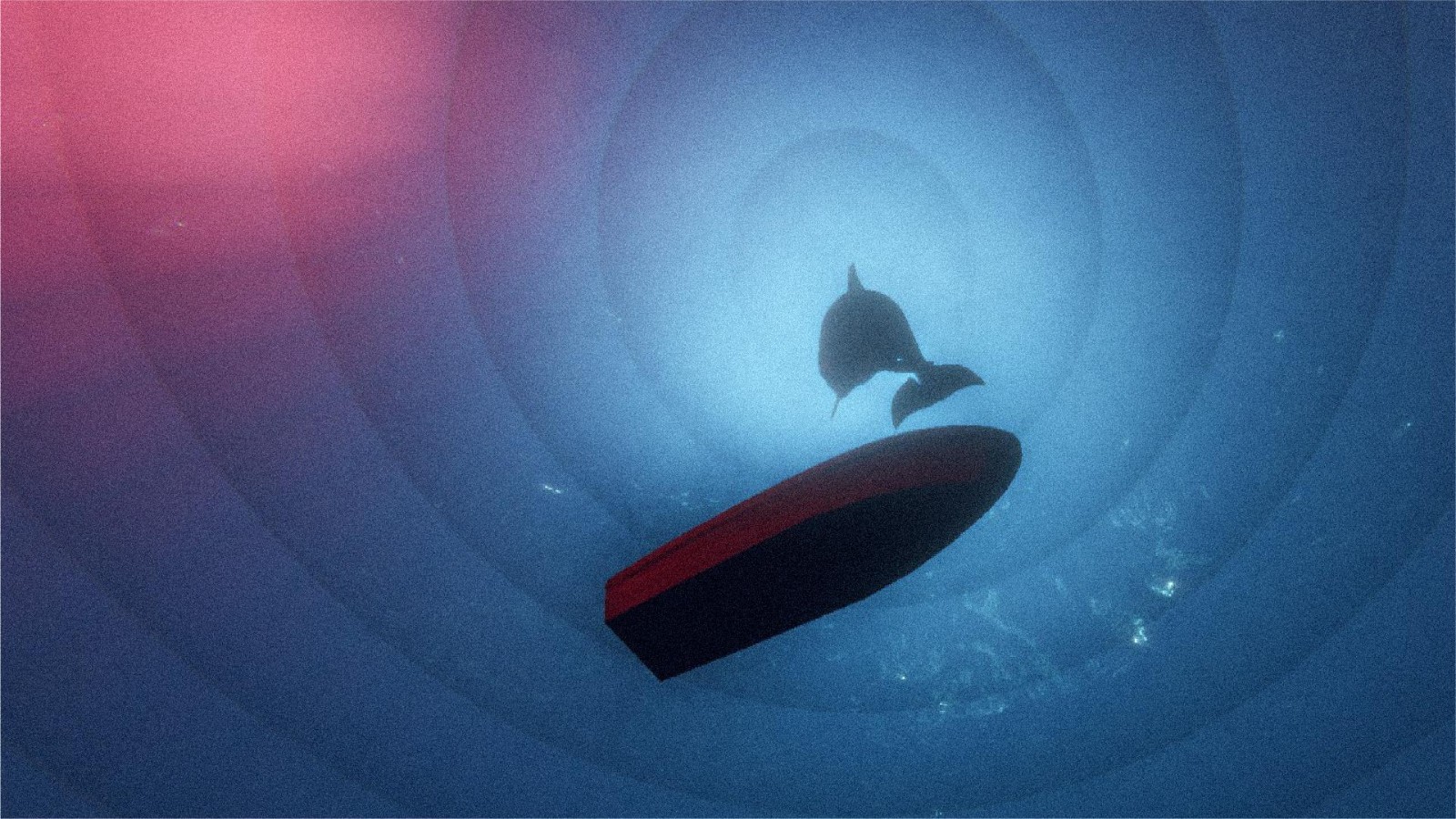 Chen Zijian and CheeseTrap, “The Cove”, 2020, Multimedia interactive image
Chen Zijian and CheeseTrap, “The Cove”, 2020, Multimedia interactive image
“The Cove” was produced by CheeseTrap, which consists of five students from the School of Innovation and Design, China Academy of Art. The work comes from the documentary with the same name which won the Best Documentary Feature of the 82nd Oscars. In this game-like interactive work, the audience can manipulate a virtual character to move freely in an ocean space like Atlantis. The entire space is like a large virtual museum, which is divided into six separate spaces, including a mourning area that restores and amplifies the tweets of the killed dolphins, an exhibition space that presents the views of environmentalists and Taiji fishermen, and a performance space where events exploded into the mass media.
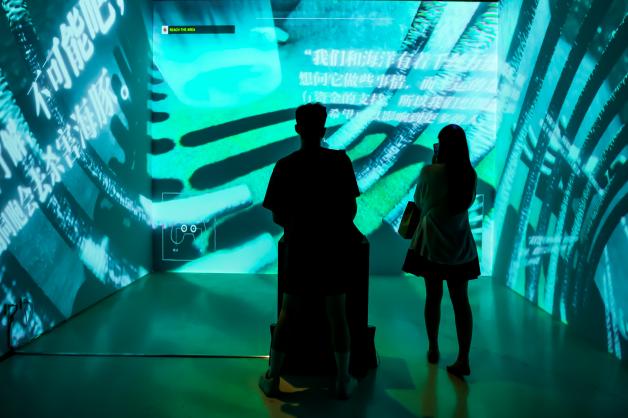
Exhibition View
In particular, it is worth mentioning that the artist team did not only provide an anthropological report with a richer content than the documentary during the presentation process, but they also paid great attention to details such as vision and interaction. The work provides the audience with a new understanding and reflection on the complex theme of this event more than ten years ago, it involves ecological protection, animal ethics, international relations, national culture and information dissemination which provides a sufficiently diverse perspective and a lower threshold. The work won the Art Award of this exhibition.

Zhang Zizhan, “Mars Collide with Earth”, 2020, Laser, loudspeaker, mirror panel, power amplifier board, bracket
Young artists occupy a considerable proportion of the participating artists, and this young characteristic is also consistent with digital art itself. The U19 award designed for teenagers in the exhibition was awarded to a sound and light installation called “Mars Collide with Earth.” It can be said that digital art should no longer be simply regarded as an avant-garde form. It has become a daily expressive method for many people, and even a basic method for them to experience this new world.
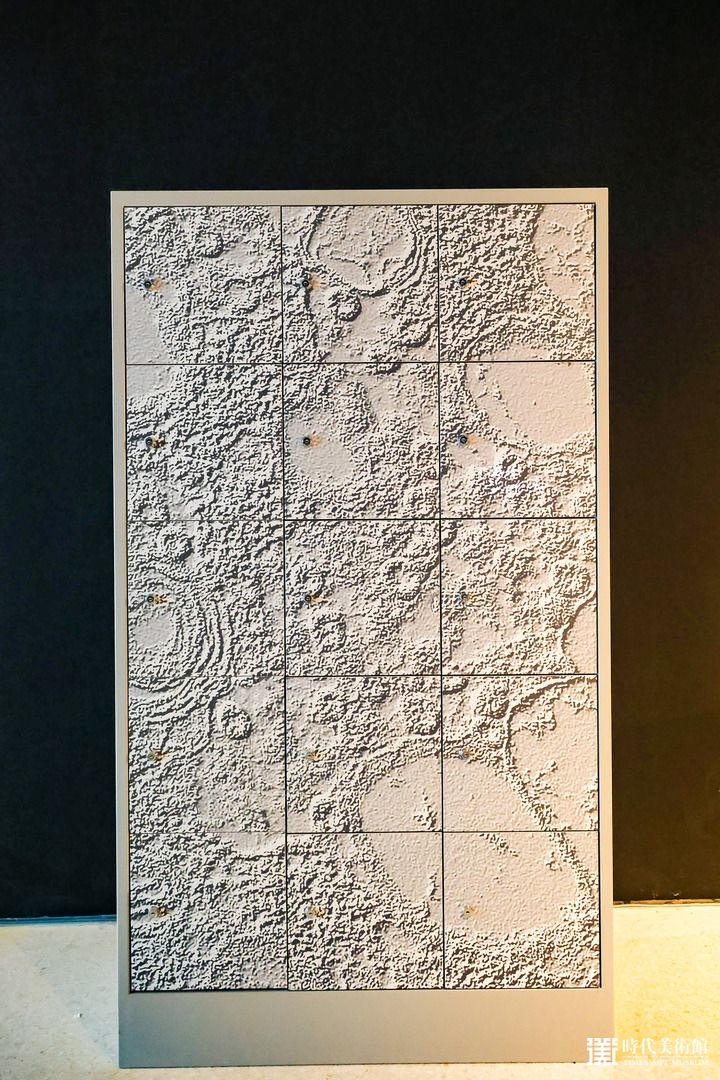
Jeffery Shaw and Sarah Kenderdine, “Safe House”, 2020, Composite material
However, being full of energy does not mean that digital art is the patent of young people. Australian artist Jeffery Shaw, who was born in the 1940s, started advocating the concept of “interaction” as early as the 1960s before the universalization of digital technology. Now he has more than 40 years of experience in media art creation. Jeffery Shaw exhibited the installation “Safe House” in collaboration with the digital museum scholar Sarah Kenderdine. The main body of this work is a cabinet printed with the COVID-19 virus, which was filmed by an iPad. By scanning, the audience can virtually “open” any of the locker door, and then see the image of an old man or woman repeating a certain set of actions from a video game to keep “exercising.” The work reflects the situation of people (especially senior citizens) under the pandemic with a Dada-style humor, and tries to reaffirm the meaning of life, which also makes “safe house” the key word of this exhibition.
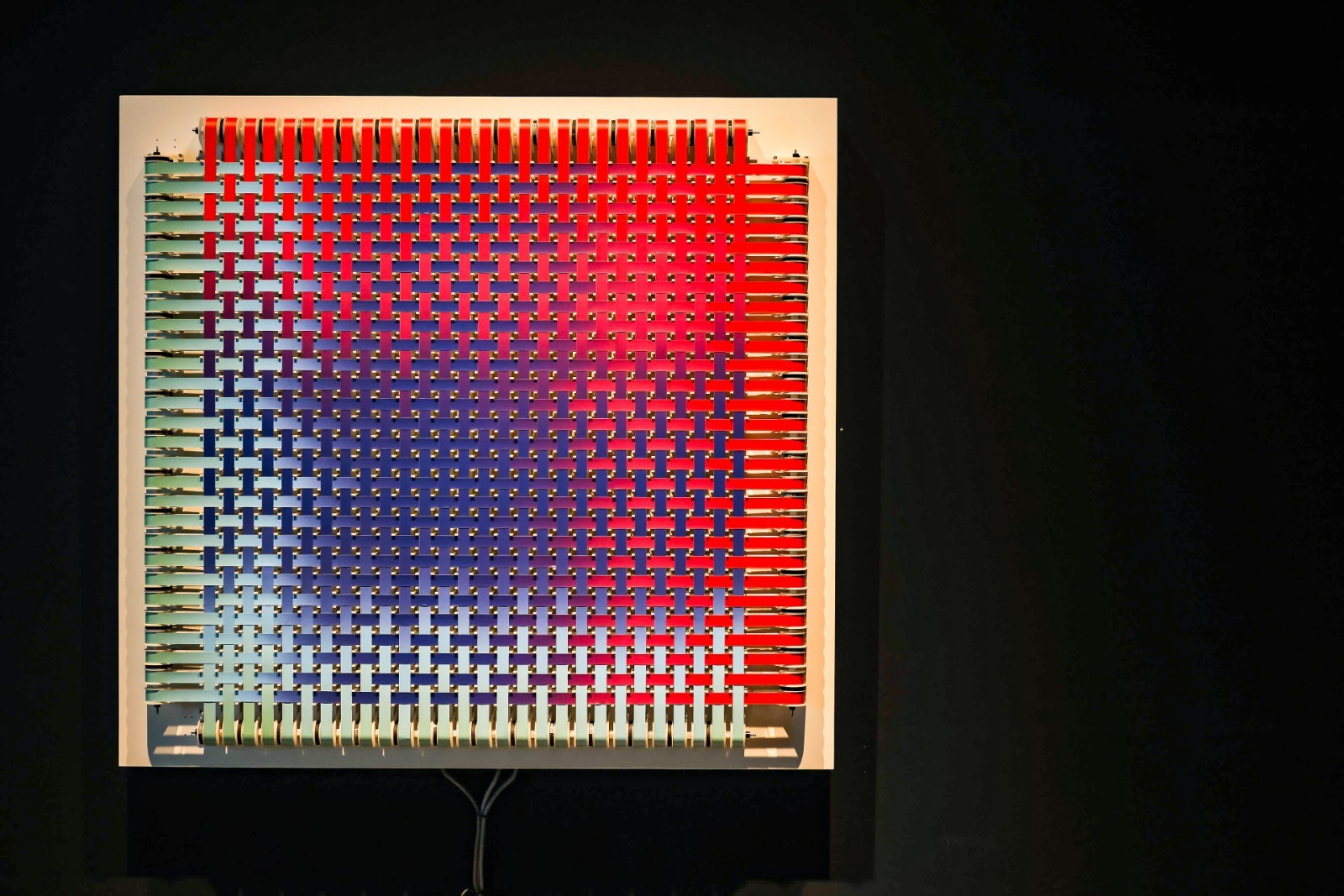 Guo Yaoxian, “Entropy”, 2019, PVC cloth tape, CNC system, reduction motor, infrared sensor
Guo Yaoxian, “Entropy”, 2019, PVC cloth tape, CNC system, reduction motor, infrared sensor
 Reva, “5-hydroxytryptamine”, 2021, Digital video
Reva, “5-hydroxytryptamine”, 2021, Digital video
Qiu Zhijie stated that the value of digital art in the global governance system after the pandemic lies in getting rid of all ideological prejudices through super imagination, transcending the logic of confrontation between the weak and the strong, and conducting consultations and dialogues, so as to learn to cherish our differences, and thus make them a constructive force in the world and maintain cultural diversity. The power of art lies in breaking down the high walls that hold our souls, so that we can always keep our hearts open in this rapidly changing world.
At the opening ceremony, the organizer expressed that in recent years, the integration of “digital and art” has continuously become a new topic and trend in society, and at the same time it has spawned new industrial formats, created with new cultural demands, and has become the new direction and new content that integrates technology and life. The Asia Digital Art Exhibition will strive to continuously deepen the integration of culture and technology and build an internationally sustainable sharing platform.
The exhibition will remain on view till August 31.
Text by Luo Yifei, ed. and trans. by Sue/CAFA ART INFO
Image Courtesy of the Organizer
About the exhibition
Safe House: 2021 Asian Digital Art Exhibition
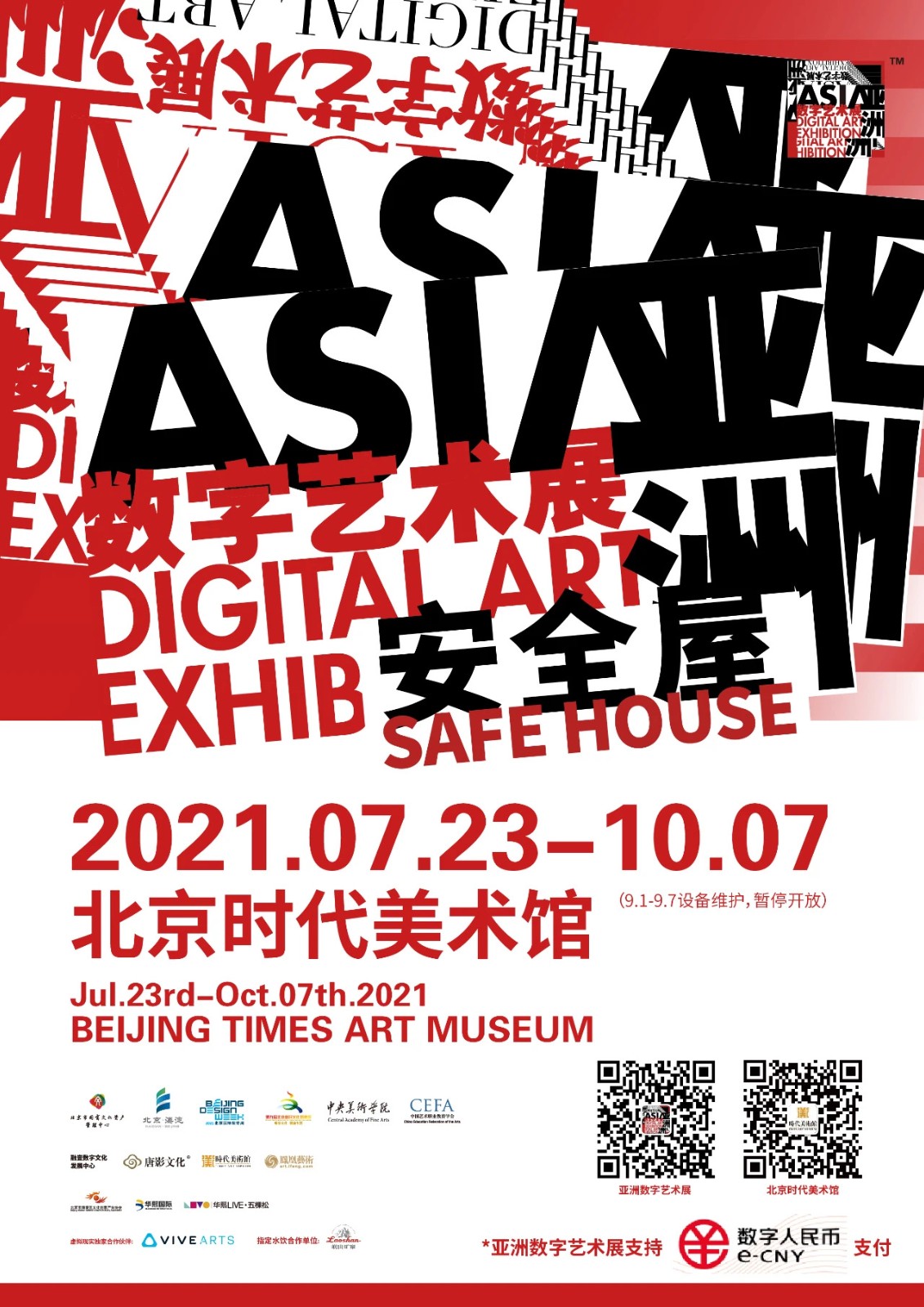
Curators: Qiu Zhijie, Chen Baoyang
Duration: July 23-October 7, 2021
Venue: Beijing Times Art Museum (Huaxi LIVE, No.69 Fuxing Road, Haidian District)
Opening hours: 10:00-22:00 (Monday to Sunday)




























